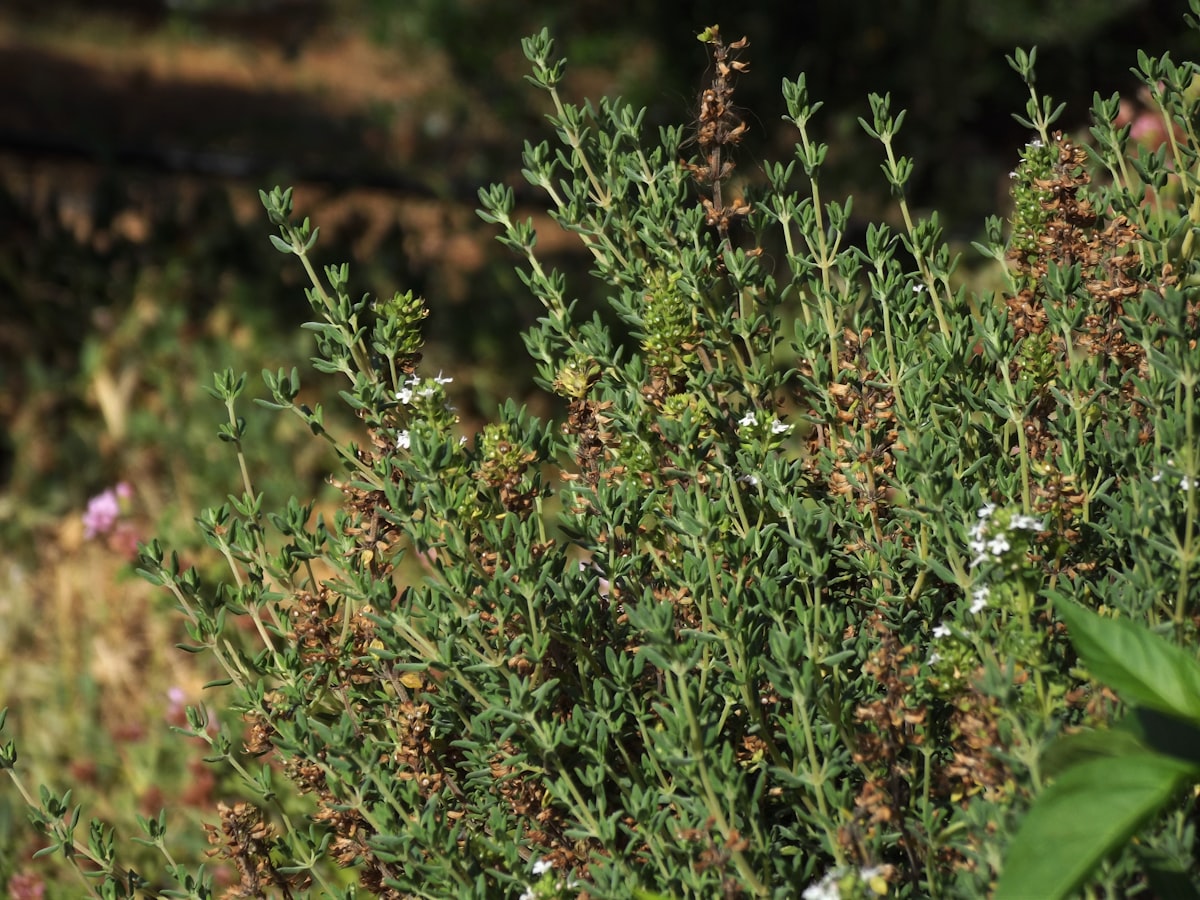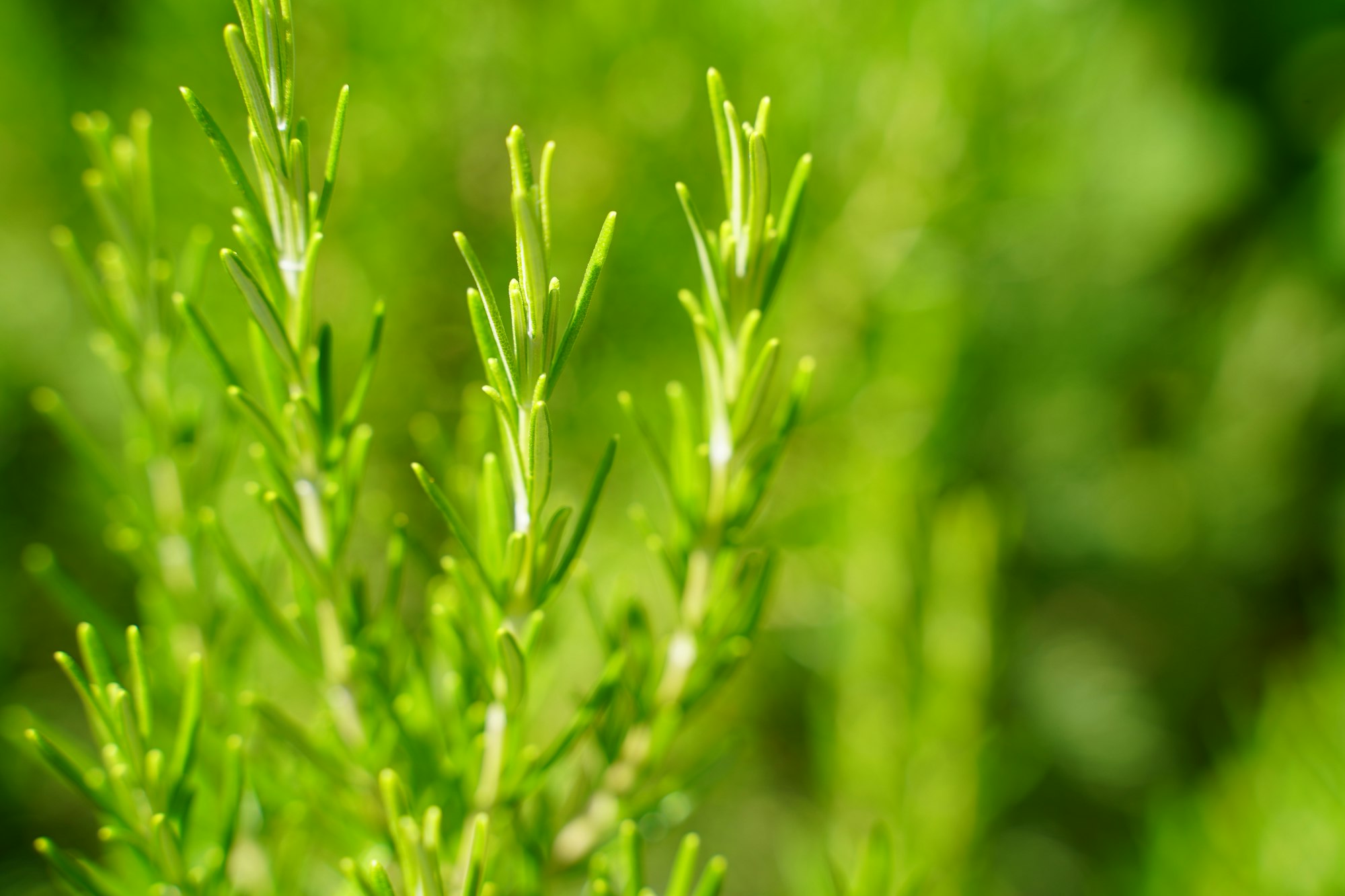How to Grow Thyme
Thyme is a versatile, aromatic herb that adds a pleasant, pungent flavor to various dishes. With Mediterranean origins, thyme plants thrive in full sunlight, receiving six to eight hours of light daily.

Table of Contents
To grow thyme, purchase young thyme seedlings from a nursery or obtain cuttings from an existing plant.
Plant your thyme in a sunny, exposed spot in your garden or decorative planters with well-drained, slightly sandy soil and a pH of 6.0 to 6.7.
About Thyme
Thyme is a perennial, woody herb known for its aromatic and flavorful qualities. It belongs to the Thymus genus and is available in numerous species and varieties, such as lemon thyme and common thyme.
In your garden, thyme plants thrive in full sun exposure, requiring six to eight hours of bright light daily.
They prefer well-draining soil that isn't overly rich or moist, ensuring optimal growth and resilience against pests and diseases.
Growing Thyme
Before planting thyme in your garden, choose a location that receives at least six to eight hours of full sunlight daily.
Thyme prefers a soil environment that is not overly rich or moist; well-drained soil with a pH between 6.0 and 8.0 is ideal for its growth.
Start propagating thyme by planting seeds indoors in late winter or early spring, about six weeks before the last frost.
Sow the seeds ¼ inch deep in seed trays or pots and keep the soil evenly moist until the seeds germinate, which may take up to three weeks.
When seedlings reach 3 inches tall and the danger of frost has passed, you can transplant them outdoors, spacing them 12 to 24 inches apart.
Alternatively, you can plant young thyme plants directly in your garden after the last frost of spring.

Caring for Thyme Plant
Sun and Temperature
Thyme thrives in full sun exposure and can tolerate various temperatures, from hardiness zones 5 to 9.
Ensure your thyme plant receives at least six hours of direct sunlight daily for the best growth.
Water and Humidity
Thyme prefers well-drained soil with low to moderate water requirements.
Make sure to water your thyme plant sparingly and avoid overwatering, as thyme is drought-tolerant and can suffer from root rot in overly moist conditions.
Soil
This herb grows best in sandy or loamy soil with good drainage. Maintaining a soil pH level between 6.0 and 8.0 for optimal thyme growth.
Fertilizer
Thyme typically does not require heavy fertilization. However, if your soil is nutrient-poor, apply a balanced liquid fertilizer or compost at the start of the growing season.
Repotting
When growing thyme in containers, repot the plant every two to three years or when it outgrows its current pot.
Choose a container with drainage holes and use a sandy or loamy soil mix for successful growth.
Pruning and Propagation
Regular pruning encourages bushy growth and prevents the thyme plant from becoming leggy.
Propagate thyme using cuttings, layering, or divisions, and use a rooting hormone if necessary to encourage faster root development.
Troubleshooting Plant Problems
Growing Problems
Thyme prefers sandy or loamy soil and can even thrive in rocky gravel. Ensure your thyme is planted in well-draining soil with enough sunlight.
Overwatering can lead to root rot, so monitoring soil moisture and water only when necessary is vital.
In very wet climates, winter dampness might harm your thyme.
Most thyme varieties are cold-hardy but always choose one suitable for your local climate (zones 3-11).
Pests and Diseases
Some common pests affecting thyme plants are aphids and spider mites.
You can use organic insecticides or attract beneficial insects like ladybugs to control these pests. Regular monitoring and early treatment are crucial in managing pests.
Diseases such as Alternaria leaf spot and botrytis rot can attack thyme plants.
To prevent fungal infections, treat garden soil with an organic fungicide and ensure proper air circulation around the plants. Remove infected leaves promptly to limit disease spread.
Companion Planting
Thyme pairs well with plants that require similar growing conditions, such as rosemary, sage, and lavender.
Planting thyme alongside these herbs may also help deter pests, as their strong scents can mask the smell of other plants or repel insects.
Avoid planting thyme near vegetables that need frequent watering, as thyme thrives in well-draining soils and might suffer in overly moist conditions.
Experiment with different companion planting strategies to find the best combination for your garden.
Conclusion
Thyme (Thymus vulgaris) is a low-growing, woody perennial herb that thrives in sunny, somewhat dry conditions.
For successful growth, you can propagate it through seed, cuttings, or division, which generally requires little maintenance.
To ensure a thriving thyme plant, avoid over-fertilizing and be mindful of common issues like root rot, aphids, and spider mites.
Enjoy its versatile uses, such as cooking or as an ornamental addition to your garden.
Frequently Asked Questions
Which thyme varieties are best for cooking?
Common Thyme (Thymus Vulgaris) is a popular cooking variety known for its pleasant, pungent, clover flavor. Other culinary types include Lemon Thyme and Caraway Thyme, each offering unique flavors to enhance your dishes.
Is thyme a perennial or an annual plant?
Thyme is a perennial plant that will continue to grow and produce for multiple years. It's a low-growing, woody plant that thrives exceptionally well in dry, sunny conditions.
How often should thyme be watered?
Thyme prefers a somewhat dry environment, so it's important not to overwater. Allow the soil to dry out between waterings, and then water thoroughly to promote vigorous root growth.
In which conditions does thyme grow best?
Thyme grows best in sunny conditions with well-drained soil. As a native Mediterranean plant, it can tolerate low-quality soil and dry environments, making it a resilient and low-maintenance option for your garden.
When can I expect thyme to flower?
Thyme typically flowers in early summer, although it can vary depending on the specific variety and growing conditions. The flowers are often small and clustered, attracting bees and other pollinators to help support a thriving garden ecosystem.


